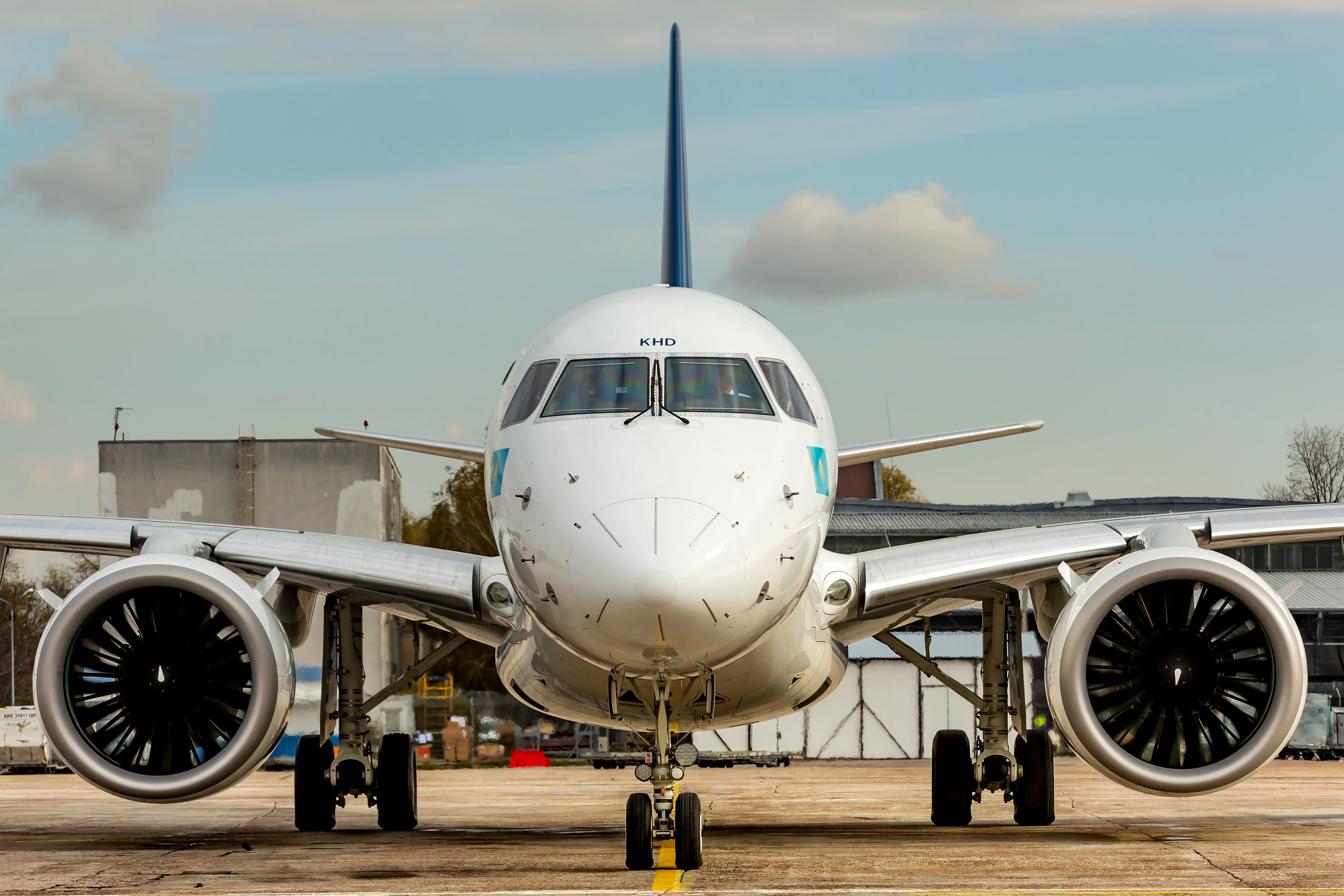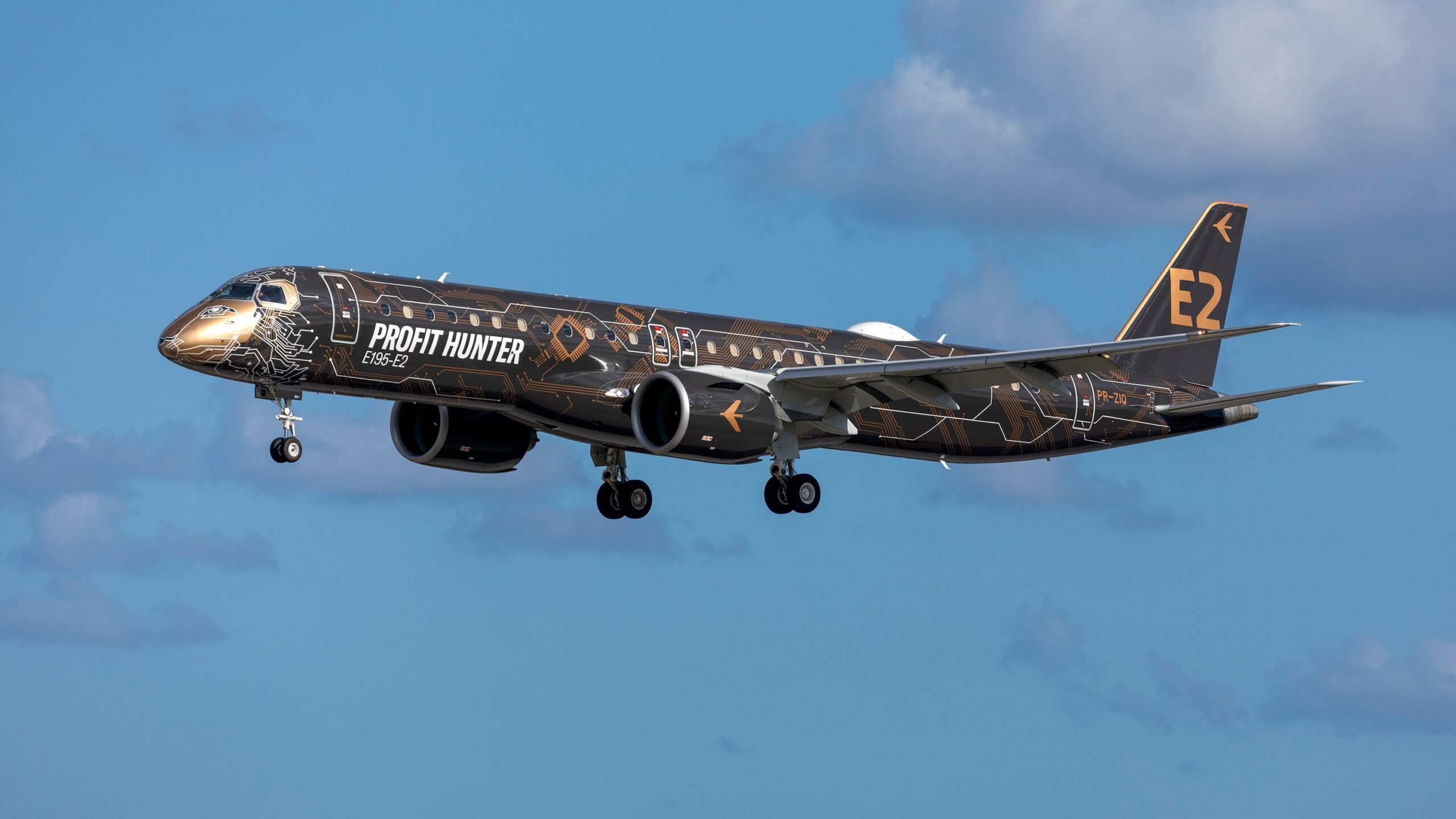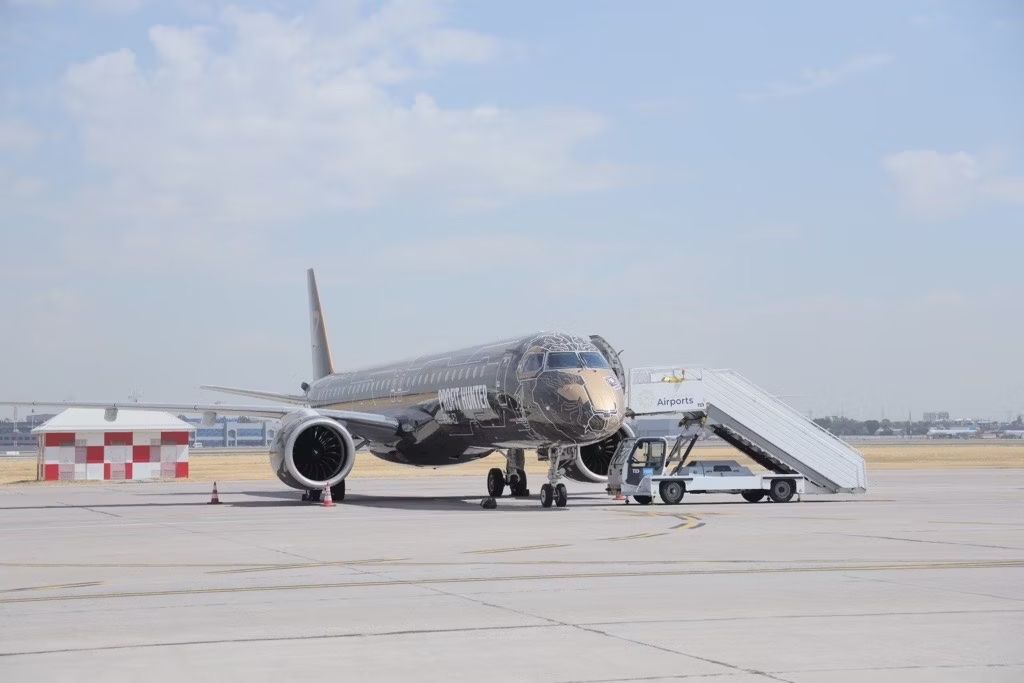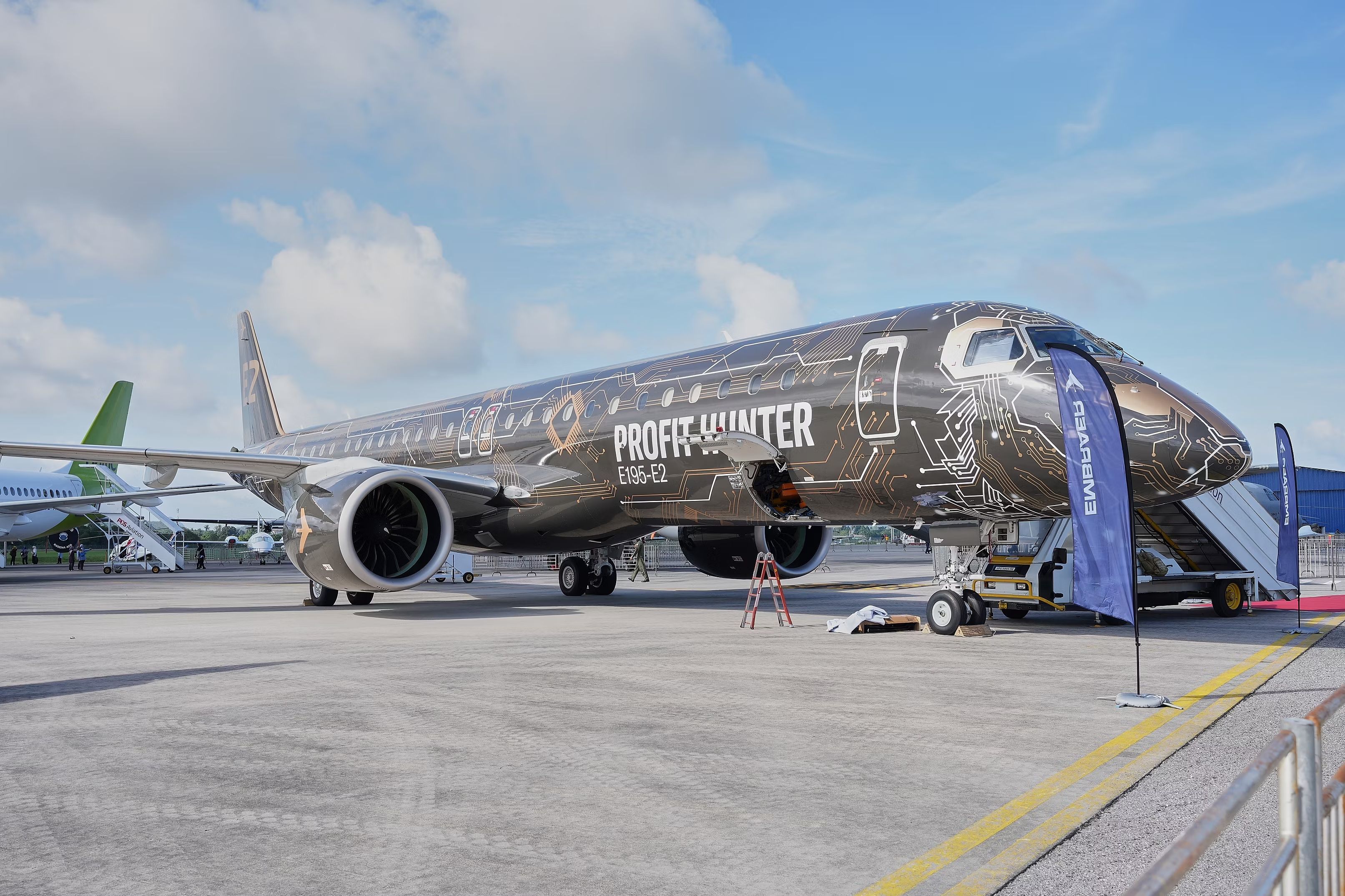Summary
- Embraer E-Jet family has been a significant player in regional flights since 2004, with nearly 1,800 units sold.
- The E-Jet E2, launched in 2016, features upgrades in performance and efficiency.
- The E175-E2’s entry into service has been delayed due to the US scope clause, which limits regional aircraft to 76 seats and a maximum take-off weight of 86,000 lbs.
The Embraer E-Jet family, a product line of twin-engine regional jets with capacities from 66 to 124 seats, has played a critical role in regional flying around the globe since its first commercial flight in March 2004 with launch customer LOT Polish Airlines.
Embraer has sold nearly 1,800 units across four different variants, the E170, E175, E190 and E195. Notably, the aircraft became the backbone of many regional operations in the United States, flying for carriers subcontracted by larger airlines to operate flights.
|
Aircraft |
Firm Orders |
Deliveries |
Backlog |
|---|---|---|---|
|
E170 |
191 |
191 |
0 |
|
E175 |
943 |
756 |
187 |
|
E190 |
568 |
568 |
0 |
|
E190-E2 |
34 |
19 |
15 |
|
E195 |
172 |
172 |
0 |
|
E195-E2 |
272 |
93 |
179 |
|
Total |
2180 |
1799 |
381 |
Republic Airways, Mesa Airways, SkyWest Airlines, and Envoy Air, all leading players in the American regional market, are among some of the largest customers of the Embraer E-Jet family, specifically the E175.
From the success of the E-Jet family, it is unsurprising that Embraer launched a new and improved version of the jet. In 2016, the E-Jet E2 first took off, entering service two years later on 24 April 2018 with Norwegian regional carrier Widerøe. The jet boasted a variety of new upgrades to improve performance and efficiency, including smaller stabilizers and modern fly-by-wire controls.
Most notably, however, the manufacturer added a pair of Pratt & Whitney 1000G family GTF engines, some of the most efficient on the market. Considering this, one would naturally expect the E2 to sell just as well as, if not better than, its predecessor. This, however, has ultimately not proven the case.
Photo: Embraer
On 17 July 2013, Irish lessor AerCap placed the first order for the E2, consisting of 50 aircraft. Since then, however, the aircraft has only managed to attract 270 firm orders, of which 74 have been delivered.
Although Skywest signed an order for 100 of the smallest member of the E2 family in 2013, the E175-E2, it subsequently canceled this when it became clear the type would take much longer to enter service. At present, the project is on hold and not expected to enter service until 2027.
Regional flying in the United States
In the United States, regional flying operates rather uniquely compared to most of the world, with large airlines contracting out service operations to smaller regional airlines. The three major US airlines, United, Delta, and American, all partner with smaller carriers such as SkyWest, Horizon, or Mesa for regional operations.
However, as regional jet pilots are often paid far less than their full-service counterparts, airline pilot unions fiercely negotiate how regional subcontractors can fly.
Photo: Embraer
Currently, the scope clause limits regional aircraft to flying jets with no more than 76 seats and a maximum take-off weight (MTOW) of under 86,000 lbs. Individual airlines also maintain specific requirements, such as what portion of a carrier’s fleet can consist of regional jets operated by other airlines.
Relevant to Embraer’s situation, the E-175 was the perfect jet for regional airlines in the United States, with exactly 76 seats in a traditional configuration and an MTOW that perfectly fits within the scope clause’s requirements.
In March, American Airlines Group Inc. placed a major order for 133 Embraer 175 aircraft, with a firm order for 90 E175s and purchase rights for an additional 43 jets. With the 76 dual-class configuration, the order is valued at over $7 billion at list price. American Airlines aims to meet the growing domestic market with the new purchase. According to American Airlines CEO Robert Isom, as reported by Embraer,
“Over the past decade, we have invested heavily to modernize and simplify our fleet, which is the largest and youngest among U.S. network carriers. These orders will continue to fuel our fleet with newer, more efficient aircraft so we can continue to deliver the best network and record-setting operational reliability for our customers.”
The E2’s key problem
When Embraer redesigned the E-Jet, its new engines were added to the aircraft MTOW. This didn’t matter much for the larger E190-E2 and E195-E2, as neither was scope-compliant. However, the proposed E175-E2 was specified when the industry contemplated relaxing scope clause requirements, opening the door for sales of the new iteration.
That relaxation has not happened, and now the E175-E2’s proposed MTOW of 98,120 lb and passenger capacity of 80–90 are not compliant. This is a crucial reason that the project has been paused. Embraer is playing the waiting game to see if its redesigned, more efficient, and environmentally friendly aircraft could be operated in the USA.
Photo: SAAE 2019 – Anthony Guerra & Alex Marc © SIAE 2019 – Gilles Rolle
To put this in perspective, the only operators of the original E175 are US mainline subcontractors – SkyWest Airlines (236), Republic Airways (162), Envoy Air (101), Mesa Airlines (80). Indeed, these aircraft aren’t all ready for replacement yet; some of the oldest models are 17 or 18 years old, but many are under five years, some brand new. As older models are being replaced, airlines are replacing them with more scope-compliant E175s.
Until the E175-E2 can be within the scope of the regionals, Embraer will likely keep the brakes on its development. Should the US relax its rather protectionist scope clause, Embraer is waiting in the wings with a highly efficient, modern replacement for the E175 – something no other manufacturer is making available. Until then, it will continue to sell the E175 to the regionals, as it has been for years.

Related
Embraer Plans To Announce Upgrades To E175 & E2 Family Aircraft At The Farnborough Airshow
Improvements include the hard product, avionics, and economics.




